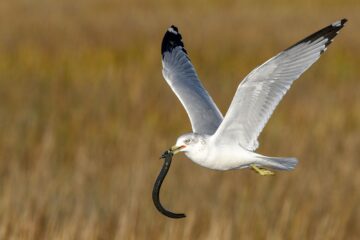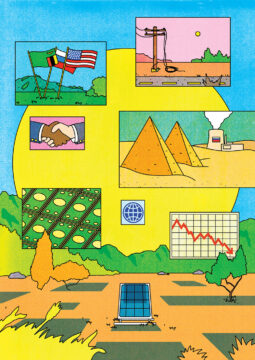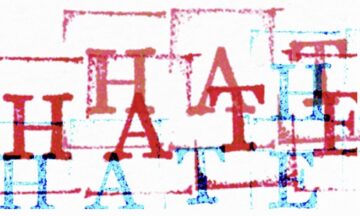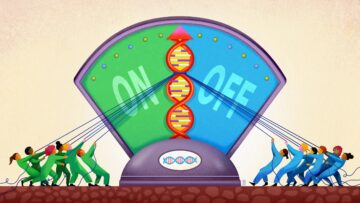Holland Cotter in The New York Times:
 Notoriously, in the winter of 1969 the Metropolitan Museum of Art opened its first exhibition devoted to African American culture, but with a show devoid of art. Called “Harlem on My Mind: Cultural Capital of Black America, 1900—1968,” it was a photomural-with-texts affair of a kind found in ethnology museums.
Notoriously, in the winter of 1969 the Metropolitan Museum of Art opened its first exhibition devoted to African American culture, but with a show devoid of art. Called “Harlem on My Mind: Cultural Capital of Black America, 1900—1968,” it was a photomural-with-texts affair of a kind found in ethnology museums.
As a student in town on a visit, I wandered into the galleries, and even with scant knowledge of Black history, I knew something was off. I soon learned I wasn’t alone. The show was being slammed by pushback. A cohort of Black contemporary artists, some living and working in Harlem, calling themselves the Black Emergency Cultural Coalition, had been picketing the museum, and directing their protest to other museums, lighting a fuse that would eventually detonate in the multicultural wave of the 1980s, with its demands for inclusion, and its affirmation of cultural identity, in art as in life, as a force.
More here. (Note: In honor of Black History Month, at least one post will be devoted to its 2024 theme of “African Americans and the Arts” throughout the month of February)

 eDNA serves as a surveillance tool, offering researchers a means of detecting the seemingly undetectable. By sampling eDNA, or mixtures of genetic material — that is, fragments of DNA, the blueprint of life — in water, soil, ice cores, cotton swabs, or practically any environment imaginable, even thin air, it is now possible to search for a specific organism or assemble a snapshot of all the organisms in a given place. Instead of setting up a camera to see who crosses the beach at night, eDNA pulls that information out of footprints in the sand. “We’re all flaky, right?” said Robert Hanner, a biologist at the University of Guelph in Canada. “There’s bits of cellular debris sloughing off all the time.”
eDNA serves as a surveillance tool, offering researchers a means of detecting the seemingly undetectable. By sampling eDNA, or mixtures of genetic material — that is, fragments of DNA, the blueprint of life — in water, soil, ice cores, cotton swabs, or practically any environment imaginable, even thin air, it is now possible to search for a specific organism or assemble a snapshot of all the organisms in a given place. Instead of setting up a camera to see who crosses the beach at night, eDNA pulls that information out of footprints in the sand. “We’re all flaky, right?” said Robert Hanner, a biologist at the University of Guelph in Canada. “There’s bits of cellular debris sloughing off all the time.” The solution seems so obvious. A region synonymous with abundant sun is hungry for more electricity. Given Africa’s colossal untapped solar radiation, the continent should be installing solar panels at a furious pace. But it’s not. Though home to 60% of the world’s best solar resources, Africa today represents just 1% of installed solar photovoltaic capacity.
The solution seems so obvious. A region synonymous with abundant sun is hungry for more electricity. Given Africa’s colossal untapped solar radiation, the continent should be installing solar panels at a furious pace. But it’s not. Though home to 60% of the world’s best solar resources, Africa today represents just 1% of installed solar photovoltaic capacity. Art is useless, said Wilde. Art is for art’s sake—that is, for beauty’s sake. But why do we possess a sense of beauty to begin with? A question we will never answer. Perhaps it’s just a kind of superfluity of sexual attraction. Nature needs us to feel drawn to other human bodies, but evolution is imprecise. In order to go far enough, to make that feeling strong enough, it went too far. Others are powerfully lovely to us, but so, in a strangely different, strangely similar way, are flowers and sunsets. Art, in turn, this line of thought might go, is a response to natural beauty. Stunned by it, we seek to rival it, to reproduce it, to prolong it. Flowers fade, sunsets melt from moment to moment; the love of bodies brings us grief. Art abides. “When old age shall this generational waste, / Thou shalt remain.”
Art is useless, said Wilde. Art is for art’s sake—that is, for beauty’s sake. But why do we possess a sense of beauty to begin with? A question we will never answer. Perhaps it’s just a kind of superfluity of sexual attraction. Nature needs us to feel drawn to other human bodies, but evolution is imprecise. In order to go far enough, to make that feeling strong enough, it went too far. Others are powerfully lovely to us, but so, in a strangely different, strangely similar way, are flowers and sunsets. Art, in turn, this line of thought might go, is a response to natural beauty. Stunned by it, we seek to rival it, to reproduce it, to prolong it. Flowers fade, sunsets melt from moment to moment; the love of bodies brings us grief. Art abides. “When old age shall this generational waste, / Thou shalt remain.” Many Americans, as far as I can tell, don’t want to shape their views in accordance with the data; many Americans, again as far as I can tell, don’t want to create an environment in which a broad range of perspectives are freely articulated and peacefully debated. They don’t want to be hopeful about the possibilities of America. Nor do they want academic freedom in our universities. What many people want, what they earnestly and passionately desire, is to hate their enemies. A few years ago J.D. Vance—now a senator, then a political neophyte—
Many Americans, as far as I can tell, don’t want to shape their views in accordance with the data; many Americans, again as far as I can tell, don’t want to create an environment in which a broad range of perspectives are freely articulated and peacefully debated. They don’t want to be hopeful about the possibilities of America. Nor do they want academic freedom in our universities. What many people want, what they earnestly and passionately desire, is to hate their enemies. A few years ago J.D. Vance—now a senator, then a political neophyte— Initially, it was suspected that gene regulation was a simple matter of one gene product acting as an on/off switch for another gene, in digital fashion. In the 1960s, the French biologists François Jacob and Jacques Monod first elucidated
Initially, it was suspected that gene regulation was a simple matter of one gene product acting as an on/off switch for another gene, in digital fashion. In the 1960s, the French biologists François Jacob and Jacques Monod first elucidated  Pakistan is a vast country of 231.4 million people. It’s one of only nine countries in the world with nuclear weapons. It’s located in South Asia, which is now one of the world’s most dynamic and fast-growing regions. It has generally favorable relationships with both the United States and China. It has a long coastline in a generally peaceful region of the ocean. It has plenty of talented people, as evidenced by the fact that Pakistani Americans, on average,
Pakistan is a vast country of 231.4 million people. It’s one of only nine countries in the world with nuclear weapons. It’s located in South Asia, which is now one of the world’s most dynamic and fast-growing regions. It has generally favorable relationships with both the United States and China. It has a long coastline in a generally peaceful region of the ocean. It has plenty of talented people, as evidenced by the fact that Pakistani Americans, on average,  Much of the attention being paid to generative AI systems has focused on how they replicate the pathologies of already widely deployed AI systems, arguing that they centralise power and wealth, ignore copyright protections,
Much of the attention being paid to generative AI systems has focused on how they replicate the pathologies of already widely deployed AI systems, arguing that they centralise power and wealth, ignore copyright protections,  József Debreczeni’s memoir of the Nazi death camps, translated into English from Hungarian for the first time, frequently echoes Edgar’s claim. After being moved from “the capital of the Great Land of Auschwitz” to one of the networks of sub-camps, Eule, he discovers that he is to be moved again: “Surely I couldn’t end up in a place much worse, I thought – and how tragically wrong I was.” By the end of his remarkable set of observational writings, the word “worse” has lost all meaning; comparing the depths of human experiences of depravity and suffering feels obscene in itself. Is typhoid worse than starvation? Is being crushed to death while mining a subterranean tunnel worse than wasting away in a pool of one’s own filth?
József Debreczeni’s memoir of the Nazi death camps, translated into English from Hungarian for the first time, frequently echoes Edgar’s claim. After being moved from “the capital of the Great Land of Auschwitz” to one of the networks of sub-camps, Eule, he discovers that he is to be moved again: “Surely I couldn’t end up in a place much worse, I thought – and how tragically wrong I was.” By the end of his remarkable set of observational writings, the word “worse” has lost all meaning; comparing the depths of human experiences of depravity and suffering feels obscene in itself. Is typhoid worse than starvation? Is being crushed to death while mining a subterranean tunnel worse than wasting away in a pool of one’s own filth? What a document dump!
What a document dump!